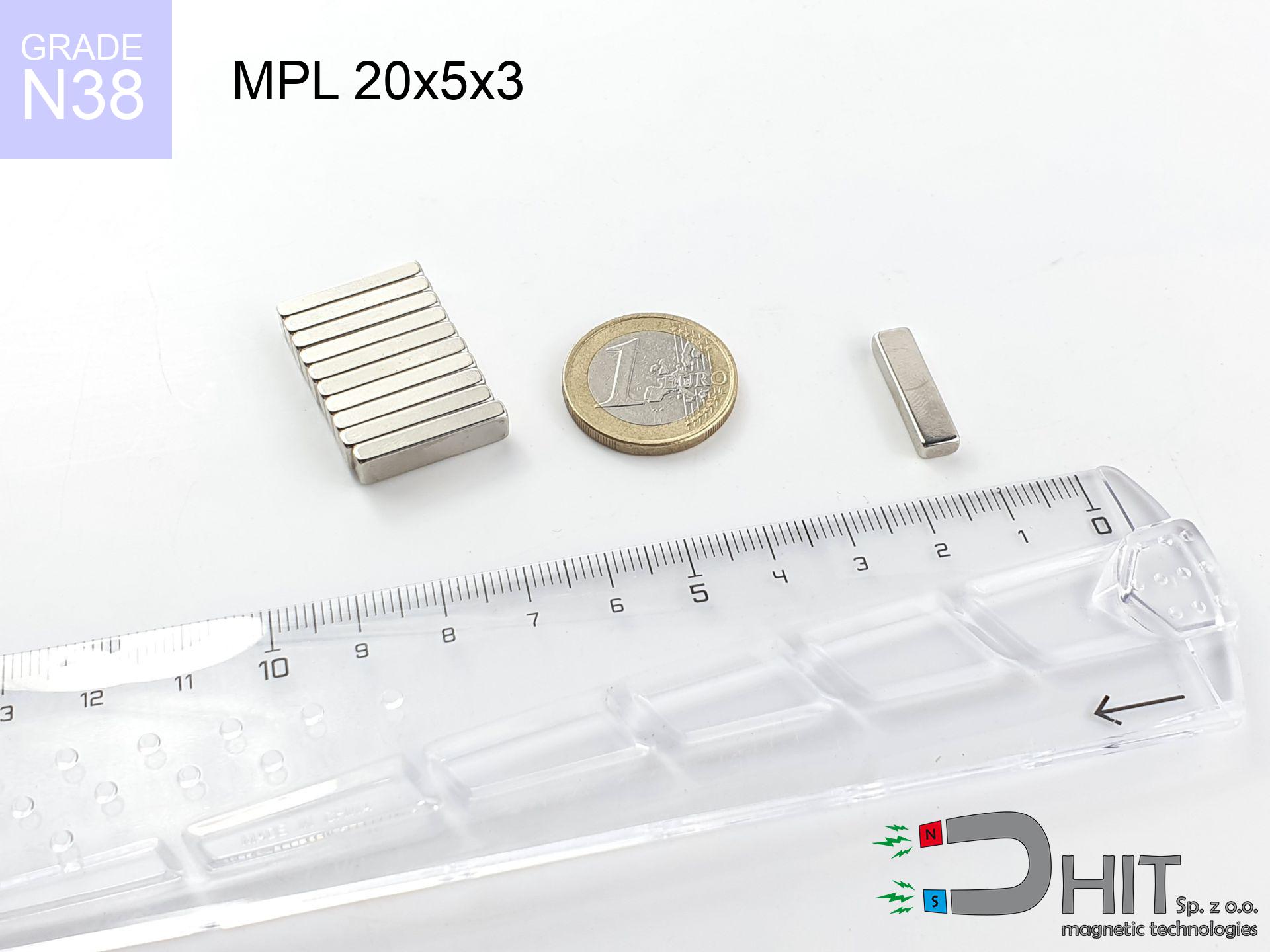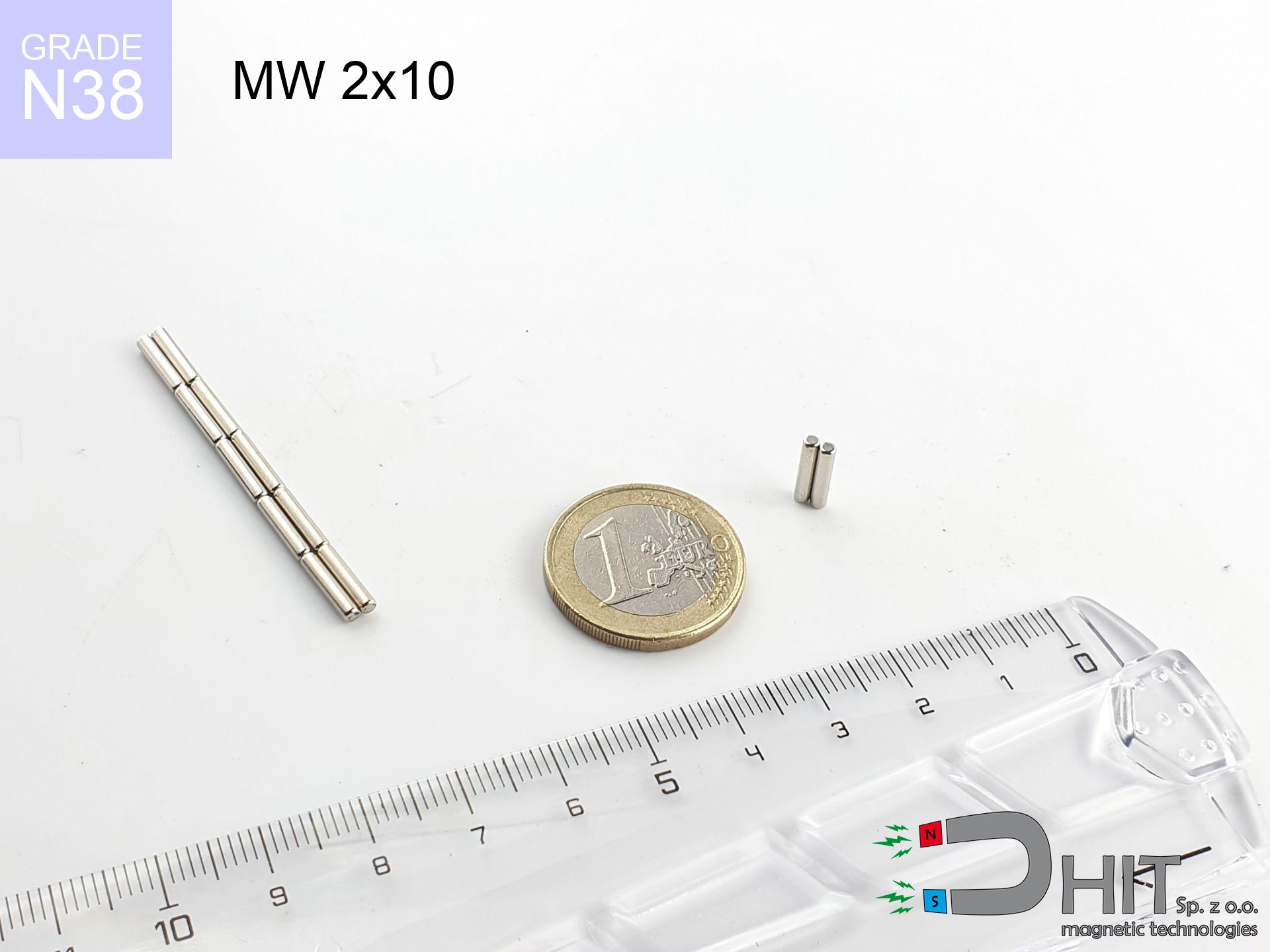UI 45x13x6 [C323] / N38 - badge holder
badge holder
Catalog no 150334
GTIN/EAN: 5906301813590
length
45 mm [±1 mm]
Width
13 mm [±1 mm]
Height
6 mm [±1 mm]
Weight
0.15 g
Load capacity
1.75 kg / 17.16 N
2.64 ZŁ with VAT / pcs + price for transport
2.15 ZŁ net + 23% VAT / pcs
bulk discounts:
Need more?
Give us a call
+48 22 499 98 98
if you prefer send us a note using
inquiry form
the contact page.
Weight and shape of magnetic components can be verified on our
power calculator.
Same-day processing for orders placed before 14:00.
Technical parameters of the product - UI 45x13x6 [C323] / N38 - badge holder
Specification / characteristics - UI 45x13x6 [C323] / N38 - badge holder
| properties | values |
|---|---|
| Cat. no. | 150334 |
| GTIN/EAN | 5906301813590 |
| Production/Distribution | Dhit sp. z o.o. |
| Country of origin | Poland / China / Germany |
| Customs code | 85059029 |
| length | 45 mm [±1 mm] |
| Width | 13 mm [±1 mm] |
| Height | 6 mm [±1 mm] |
| Weight | 0.15 g |
| Load capacity ~ ? | 1.75 kg / 17.16 N |
| Manufacturing Tolerance | ±1 mm |
Magnetic properties of material N38
| properties | values | units |
|---|---|---|
| remenance Br [min. - max.] ? | 12.2-12.6 | kGs |
| remenance Br [min. - max.] ? | 1220-1260 | mT |
| coercivity bHc ? | 10.8-11.5 | kOe |
| coercivity bHc ? | 860-915 | kA/m |
| actual internal force iHc | ≥ 12 | kOe |
| actual internal force iHc | ≥ 955 | kA/m |
| energy density [min. - max.] ? | 36-38 | BH max MGOe |
| energy density [min. - max.] ? | 287-303 | BH max KJ/m |
| max. temperature ? | ≤ 80 | °C |
Physical properties of sintered neodymium magnets Nd2Fe14B at 20°C
| properties | values | units |
|---|---|---|
| Vickers hardness | ≥550 | Hv |
| Density | ≥7.4 | g/cm3 |
| Curie Temperature TC | 312 - 380 | °C |
| Curie Temperature TF | 593 - 716 | °F |
| Specific resistance | 150 | μΩ⋅cm |
| Bending strength | 250 | MPa |
| Compressive strength | 1000~1100 | MPa |
| Thermal expansion parallel (∥) to orientation (M) | (3-4) x 10-6 | °C-1 |
| Thermal expansion perpendicular (⊥) to orientation (M) | -(1-3) x 10-6 | °C-1 |
| Young's modulus | 1.7 x 104 | kg/mm² |
Material specification
| iron (Fe) | 64% – 68% |
| neodymium (Nd) | 29% – 32% |
| boron (B) | 1.1% – 1.2% |
| dysprosium (Dy) | 0.5% – 2.0% |
| coating (Ni-Cu-Ni) | < 0.05% |
Sustainability
| recyclability (EoL) | 100% |
| recycled raw materials | ~10% (pre-cons) |
| carbon footprint | low / zredukowany |
| waste code (EWC) | 16 02 16 |
Other deals
Advantages and disadvantages of rare earth magnets.
Strengths
- They do not lose magnetism, even over around ten years – the drop in strength is only ~1% (theoretically),
- They possess excellent resistance to magnetism drop as a result of opposing magnetic fields,
- Thanks to the glossy finish, the coating of Ni-Cu-Ni, gold-plated, or silver gives an clean appearance,
- Magnets exhibit impressive magnetic induction on the active area,
- Due to their durability and thermal resistance, neodymium magnets are capable of operate (depending on the form) even at high temperatures reaching 230°C or more...
- Possibility of accurate shaping and modifying to specific conditions,
- Universal use in modern technologies – they find application in hard drives, electromotive mechanisms, medical equipment, also other advanced devices.
- Compactness – despite small sizes they offer powerful magnetic field, making them ideal for precision applications
Cons
- To avoid cracks upon strong impacts, we suggest using special steel housings. Such a solution secures the magnet and simultaneously improves its durability.
- We warn that neodymium magnets can reduce their power at high temperatures. To prevent this, we advise our specialized [AH] magnets, which work effectively even at 230°C.
- Magnets exposed to a humid environment can corrode. Therefore when using outdoors, we advise using waterproof magnets made of rubber, plastic or other material resistant to moisture
- Due to limitations in realizing threads and complex forms in magnets, we propose using a housing - magnetic mechanism.
- Potential hazard related to microscopic parts of magnets are risky, if swallowed, which gains importance in the context of child safety. Additionally, small components of these magnets can complicate diagnosis medical in case of swallowing.
- Due to complex production process, their price exceeds standard values,
Lifting parameters
Breakaway strength of the magnet in ideal conditions – what it depends on?
- on a block made of structural steel, effectively closing the magnetic field
- whose transverse dimension reaches at least 10 mm
- with a plane cleaned and smooth
- under conditions of ideal adhesion (surface-to-surface)
- during pulling in a direction perpendicular to the plane
- at ambient temperature approx. 20 degrees Celsius
Lifting capacity in practice – influencing factors
- Space between magnet and steel – even a fraction of a millimeter of distance (caused e.g. by veneer or dirt) drastically reduces the pulling force, often by half at just 0.5 mm.
- Direction of force – maximum parameter is reached only during pulling at a 90° angle. The force required to slide of the magnet along the plate is standardly several times smaller (approx. 1/5 of the lifting capacity).
- Steel thickness – too thin sheet causes magnetic saturation, causing part of the flux to be lost to the other side.
- Material composition – different alloys attracts identically. High carbon content worsen the attraction effect.
- Surface condition – ground elements ensure maximum contact, which increases force. Uneven metal weaken the grip.
- Thermal factor – high temperature weakens pulling force. Exceeding the limit temperature can permanently demagnetize the magnet.
Holding force was tested on a smooth steel plate of 20 mm thickness, when the force acted perpendicularly, in contrast under shearing force the holding force is lower. Moreover, even a minimal clearance between the magnet’s surface and the plate reduces the lifting capacity.
Warnings
Magnetic media
Intense magnetic fields can destroy records on credit cards, hard drives, and storage devices. Maintain a gap of at least 10 cm.
Handling rules
Be careful. Neodymium magnets act from a long distance and snap with massive power, often quicker than you can react.
Health Danger
Patients with a ICD have to maintain an safe separation from magnets. The magnetism can interfere with the operation of the life-saving device.
Allergic reactions
Warning for allergy sufferers: The Ni-Cu-Ni coating contains nickel. If an allergic reaction happens, cease handling magnets and wear gloves.
Physical harm
Big blocks can break fingers in a fraction of a second. Under no circumstances place your hand betwixt two attracting surfaces.
Material brittleness
Despite metallic appearance, the material is brittle and not impact-resistant. Do not hit, as the magnet may shatter into hazardous fragments.
Machining danger
Dust created during machining of magnets is self-igniting. Do not drill into magnets unless you are an expert.
Do not overheat magnets
Watch the temperature. Heating the magnet to high heat will ruin its properties and strength.
No play value
These products are not intended for children. Eating a few magnets may result in them connecting inside the digestive tract, which constitutes a severe health hazard and necessitates immediate surgery.
Phone sensors
Be aware: rare earth magnets generate a field that confuses precision electronics. Keep a safe distance from your phone, device, and navigation systems.

![Magnet for badge UI 45x13x6 [C323] / N38 Magnet for badge UI 45x13x6 [C323] / N38](https://cdn3.dhit.pl/graphics/banners/magnet.webp)
![UI 45x13x6 [C323] / N38 - badge holder](https://cdn3.dhit.pl/graphics/products/ui45x13x6-c323-pol.jpg)

![SM 25x300 [2xM8] / N52 - magnetic separator SM 25x300 [2xM8] / N52 - magnetic separator](https://cdn3.dhit.pl/graphics/products/sm-25x300-2xm8-dij.jpg)



